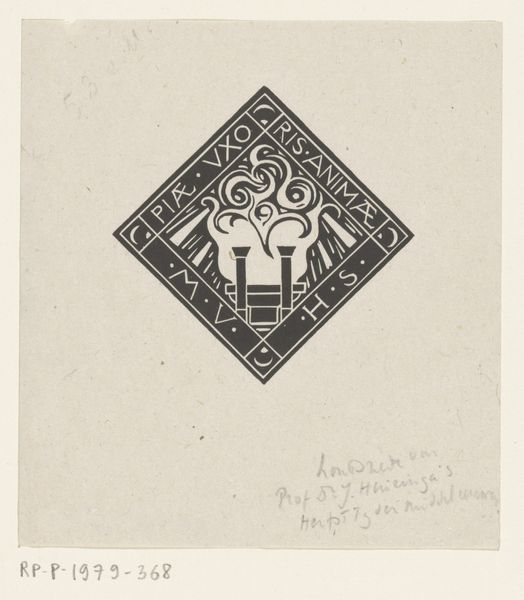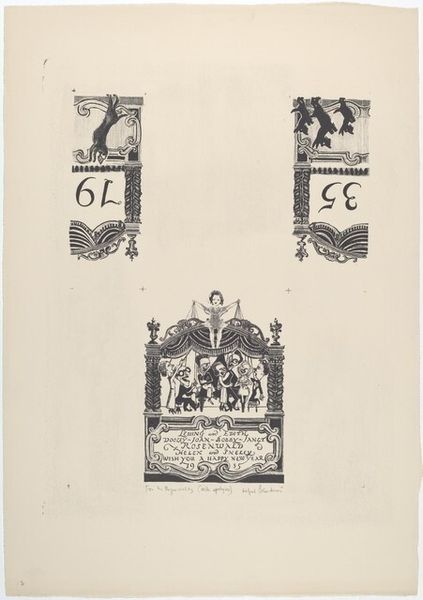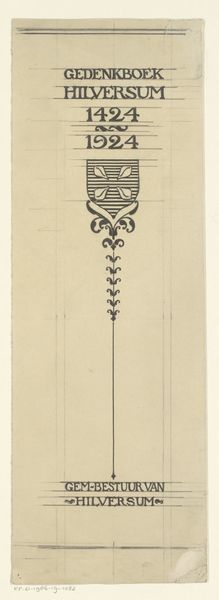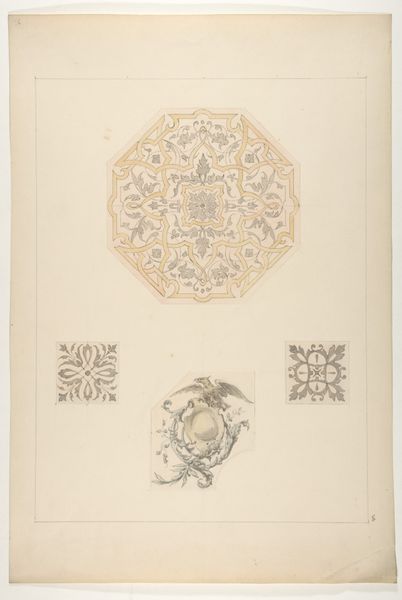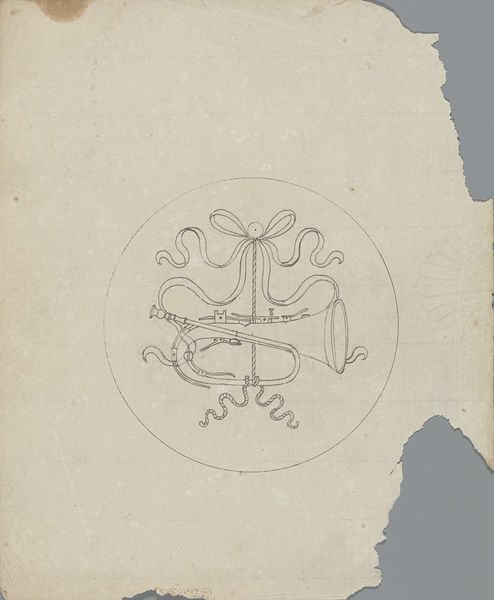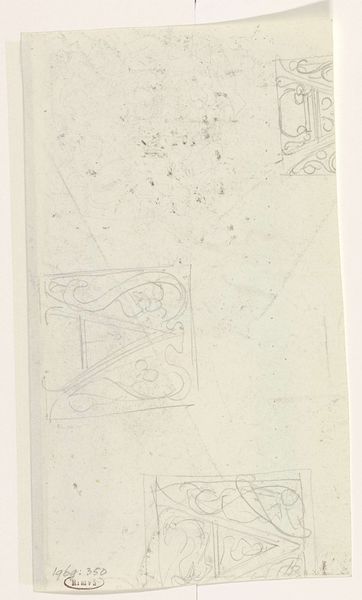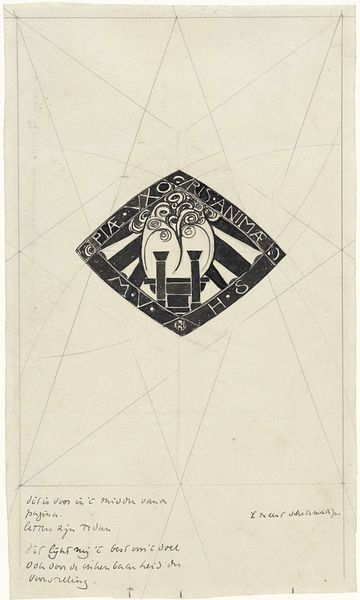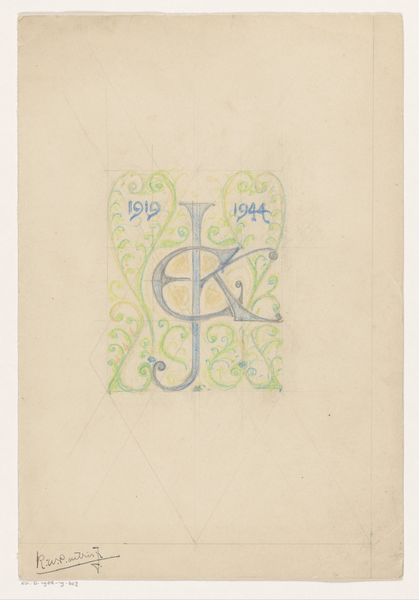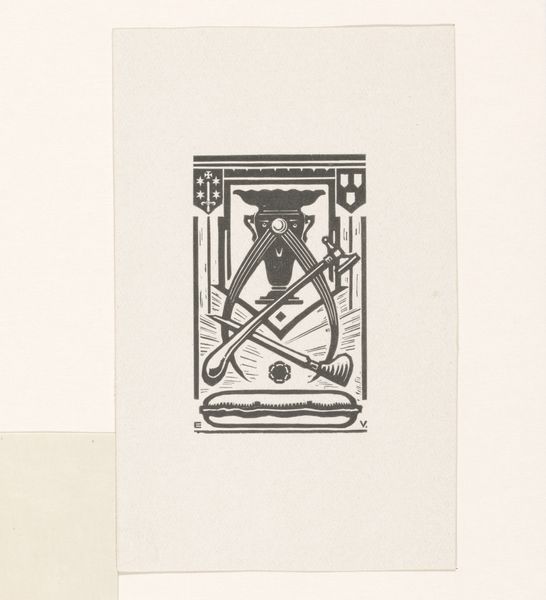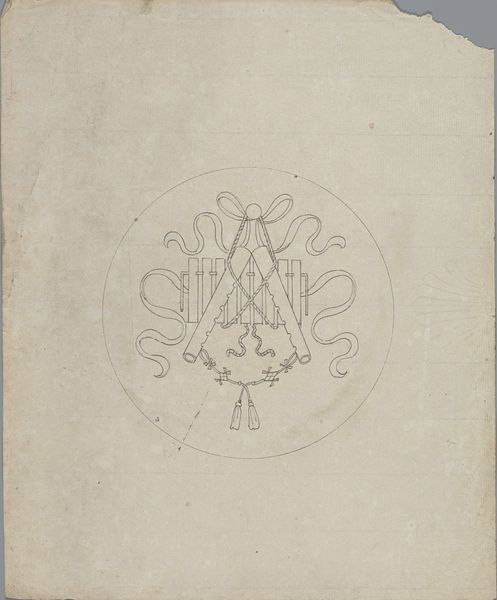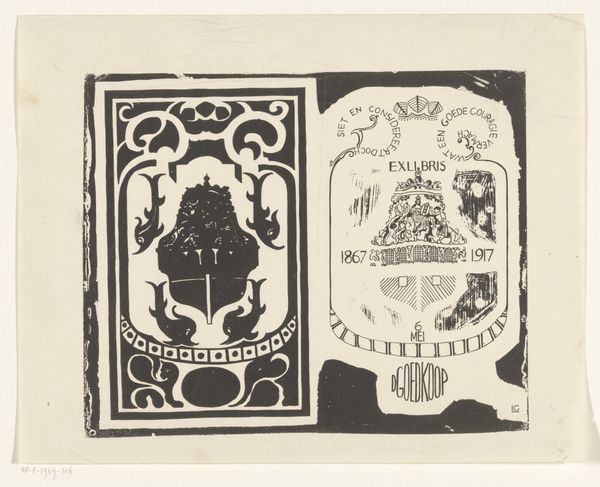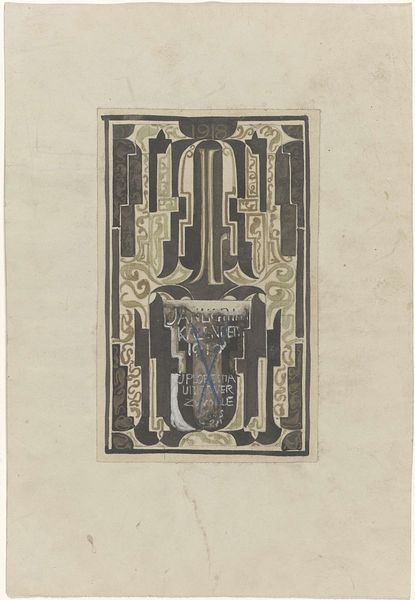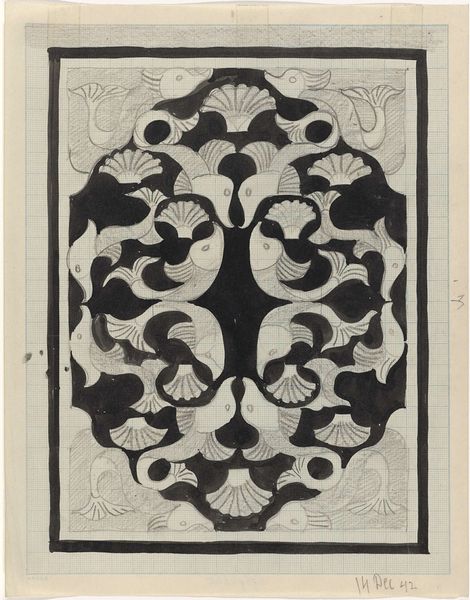
Twee ontwerpen voor een vignet Piae Uxoris Animae 1878 - 1938
0:00
0:00
drawing, paper, ink, graphite
#
shading and hatching
#
drawing
#
quirky illustration
#
shading to add clarity
#
old engraving style
#
paper
#
personal sketchbook
#
ink
#
limited contrast and shading
#
ink colored
#
symbolism
#
graphite
#
sketchbook drawing
#
pencil work
#
decorative-art
#
sketchbook art
Dimensions: height 280 mm, width 172 mm
Copyright: Rijks Museum: Open Domain
Curator: Richard Nicolaüs Roland Holst created these “Twee ontwerpen voor een vignet Piae Uxoris Animae,” two designs for a Piae Uxoris Animae stamp, sometime between 1878 and 1938. They’re ink, graphite, and pencil on paper, currently held at the Rijksmuseum. My first impression is somber and architecturally intriguing. The restricted tonal range and sharp lines make me think of preparatory drawings. Editor: Architecturally intriguing, yes! Those sharp lines work to delineate distinct planes within the circular and diamond forms. Holst’s composition clearly defines the interplay of positive and negative space, a technique reminiscent of early printmaking. The deliberate geometric framework gives the image a structural backbone that speaks to its inherent symbolism. I see those ascending flames and I consider a torch passed in memory of some loved one, no doubt. Curator: Good point! Given that “Piae Uxoris Animae” translates roughly to “For the pious soul of a wife,” that would support an understanding of grief. Each design prominently features the phrase around a stylized altar with flames rising above. I read it less as simply "grief" and more as the transformation, even the glorification, of memory through artistic symbolism. It is after all meant to exist permanently on stationery or in correspondence long after the subject is physically present. Editor: Indeed. I would propose the stark black ink against the bare paper heightens the sense of solemnity, doesn’t it? However, observe how in both designs Holst varies the treatment of flames; note that they have dynamic, almost independent existences. Curator: I notice it, too. One might even interpret the differing styles as varying states of mourning or evolving memory. The upper vignette's ordered, spiraling smoke compared to the almost chaotic flames of the lower diamond. Each evokes slightly different emotional resonances, though ultimately, they speak of a soul ascending or being eternally commemorated through these deliberate symbols. Editor: Perhaps. All these fine linework details seem intentional now. Holst successfully used only minimal visual elements to build multiple compelling narrative frameworks. Curator: Right, his visual vocabulary emphasizes a kind of memory, transformation and honor. Editor: Exactly, such powerful statements achieved with such refined execution are admirable.
Comments
No comments
Be the first to comment and join the conversation on the ultimate creative platform.
